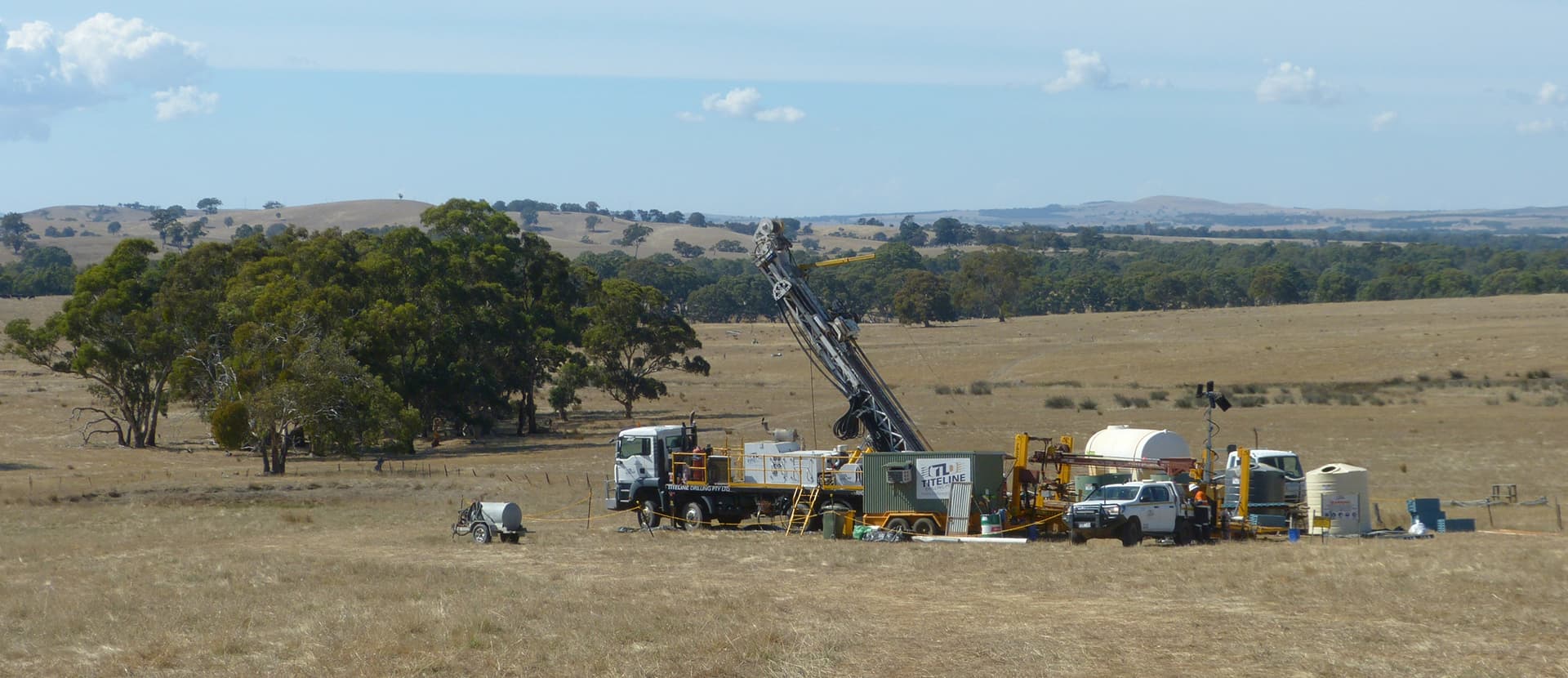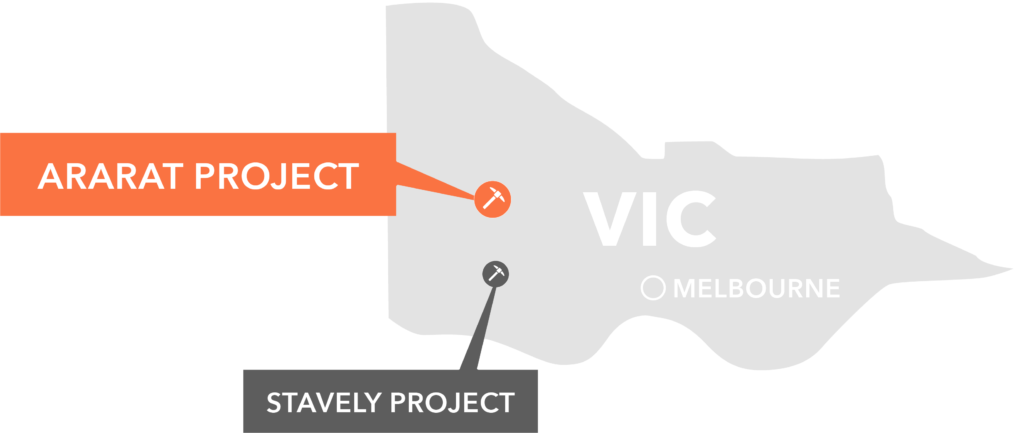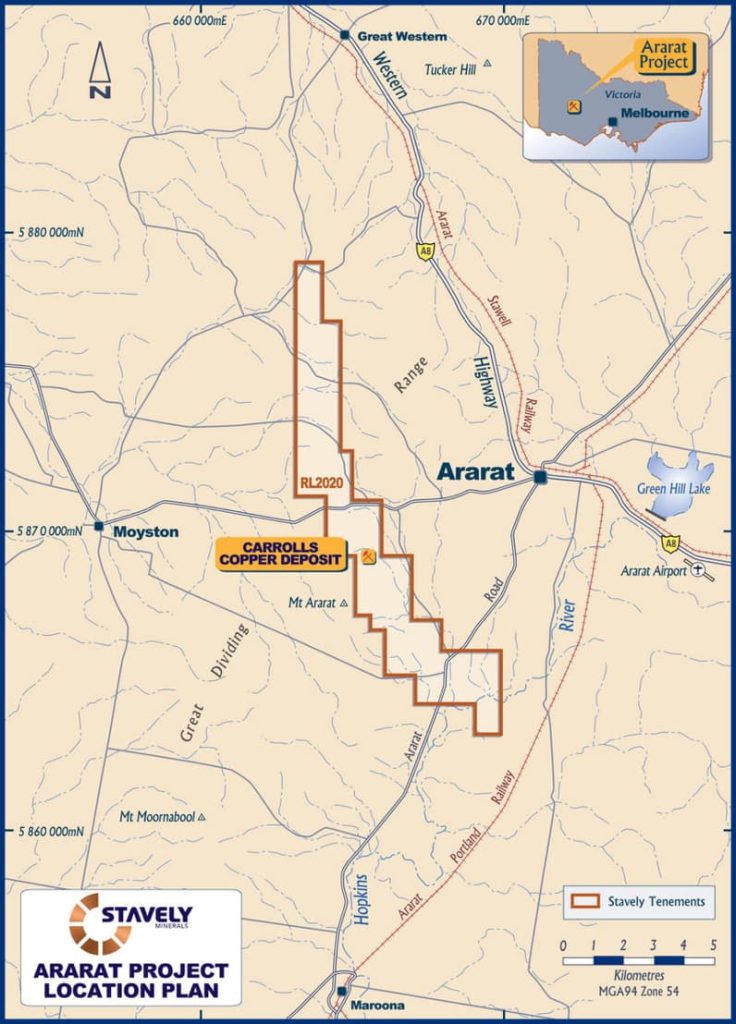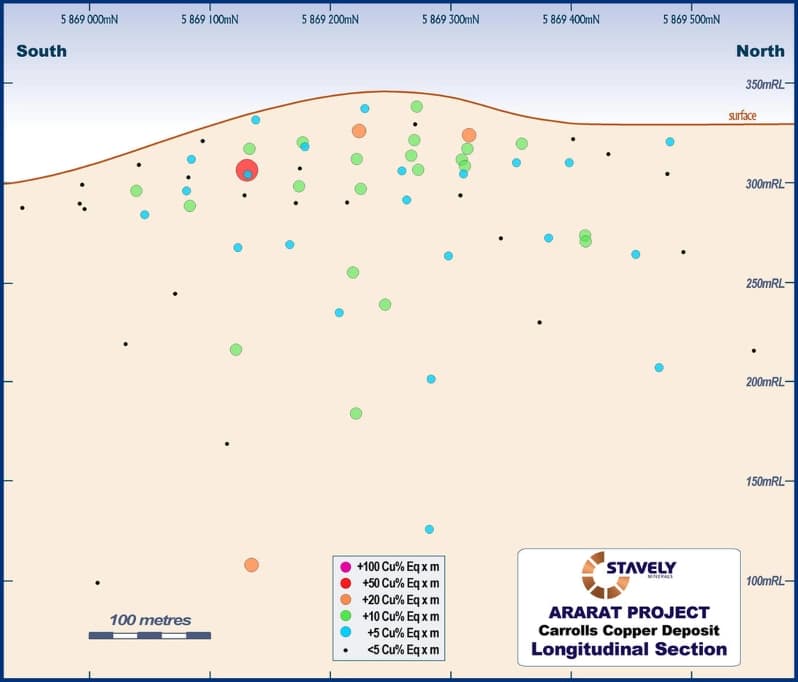
Ararat Project
26KM2 | COPPER EXPLORATION

PROJECT OVERVIEW
The Ararat Project comprises a retention licence, RL2020, covering an area of 26 square kilometres.
QUICK LINKS
REGIONAL GEOLOGY
The Ararat Project is located in part of the western margin of the Stawell-Bendigo Zone, which is part of the western Lachlan Fold Belt. The Lachlan Fold Belt is comprised of Cambrian age mafic volcanic and pelitic sedimentary units of the Moornambool Metamorphics which were metamorphosed to greenschist to amphibolite facies during the Silurian period. The Moornambool Metamorphic Complex is bounded on the east by the west dipping Coongee Fault and to the west by the Moyston Fault. The Moornambool Metamorphic Complex is predominantly comprised of mafic and quartzo-pelitic schists (eg. Carrolls Amphibolite and Lexington Schist) and their less intensely metamorphosed protoliths are occasionally preserved (eg. Magdala Metabasalt).
At the Carroll’s VMS deposit, copper-gold-zinc mineralisation is hosted in the Lexington Schist with inter-fingers and structural slivers of the Carrolls Amphibolite in a structurally overturned stratigraphy steeply dipping approximately 70 degrees to the west.


CARROLL’S VMS DEPOSIT
The Ararat Project hosts VMS (Volcanic Massive Sulphide) copper-gold-zinc mineralisation at Carroll’s (previously known as Mt Ararat). Carroll’s is a classic Besshi-style VMS with a meta-basalt footwall and meta-sedimentary quartz-biotite schists in the hanging-wall. Mineralisation is characterised by a syn-depositional lens of massive to semi-massive sulphide including pyrrhotite, chalcopyrite and lesser sphalerite. Mineralisation has been drill tested along a strike of approximately 800m and a dip of approximately 250m and remains open at depth.
The June 2022 updated MRE has an estimated (using a 1% Cu lower cut-off) Total Mineral Resource of 1.01Mt at 2.2% copper, 0.4g/t gold, 0.2% zinc and 5.6g/t silver for a contained 22kt of copper, 13,900 ounces of gold, 2,400t of zinc and 181,300 ounces of silver. Click here for details of the June 2022 Mineral Resource Estimate.
The Carroll’s MRE is considered to satisfy the reasonable prospects for eventual economic extraction (RPEEE) as it is being considered a satellite development to the larger Cayley Lode and chalcocite-enriched blanket potential development located 35km away at the Stavely Project.
Besshi style VMS deposits tend to form thin, sheet-like deposits via sub-seafloor replacement of basalt and unconsolidated clastic sediments. There is potential to find additional lenses at depth at Carroll’s or along strike within the prospective belt of host rocks.
